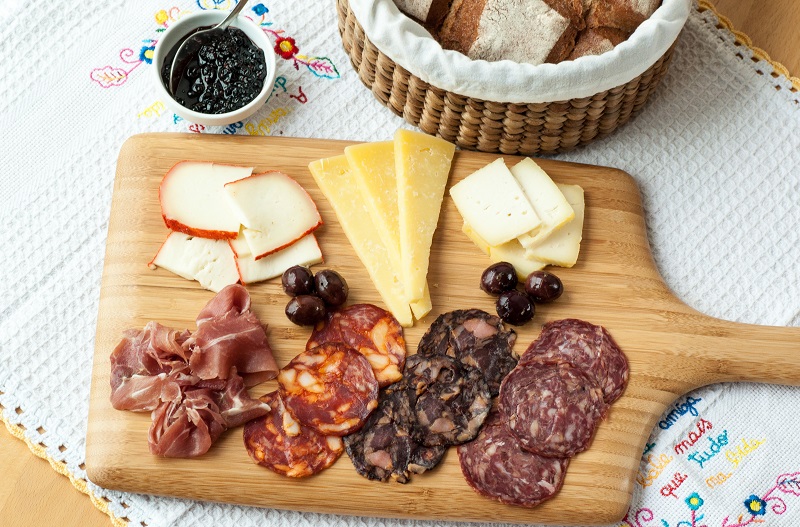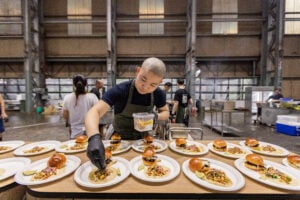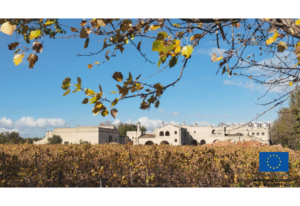How Portugal impacted world foods, while Portuguese food was influenced by the wider world
Traveling around the world, I’ve realized how little is known about Portuguese food abroad. When people think about Southern European cuisines, Italian and Spanish are more likely to come to mind. As tourism to Portugal is increasing, things are slowly changing. Portuguese food is finally starting to get the recognition it deserves!
In the 15th century, after people from Europe and the Middle East had already spread their influence across Portugal, the Portuguese decided to go beyond their borders. Even though the Portuguese explorations across the Atlantic are well known, it all started in the northern coast of Africa. Besides quenching their thirst for gold, it was in the African continent when they came across black pepper. This is when the Portuguese started developing their taste for spices. If by the beginning of the 15th century the Portuguese were exploring Africa, by 1498 they had reached India and by 1500 they were already in South America. Between colonies, trade posts and religious missions, Lisbon was now connected to Africa, South America, the Middle East and Asia.
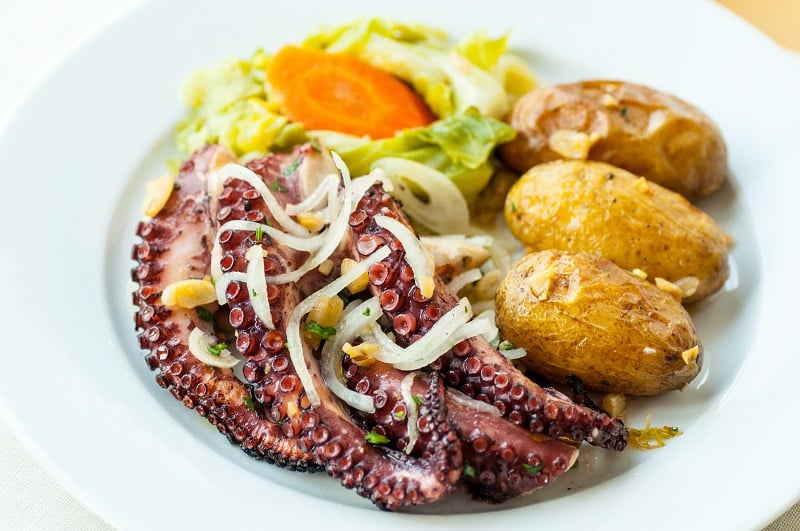
The Influence of Portugal on World Cuisines
Chilies are widely associated with Asian cuisines. For instance, it is impossible to picture a steaming bowl of bun bo Hue, without the heat induced by the chilies. But it was only in the 16th century that Portuguese sailors brought chilies from Mexico to Asia. World foods as we now know them wouldn’t be the same without the exchange of ingredients that the Portuguese trade facilitated. When Portugal took over Goa, India, they did so thinking about its strategic location for the spice route that they were eager to dominate. This is when they introduced chilies, which Indians started incorporating into their cooking. From here until the rest of Asia developed a taste for these powerful peppers, it was just a matter of time.
Beyond chilies, Portugal was responsible for bringing some wellknown ingredients from the Americas into Europe, Africa and Asia. The most widely used include potatoes, cacao, tomatoes, beans, peanuts and corn. At the same time, the Portuguese took other products to the Americas, two of the most notable ones being wheat and sugar, which changed the way locals ate forever. Asia, on the other side, was the source of many of the spices that we now take for granted in the West, after the Portuguese brought them in: cinnamon, ginger, cardamom and clove, amongst others.
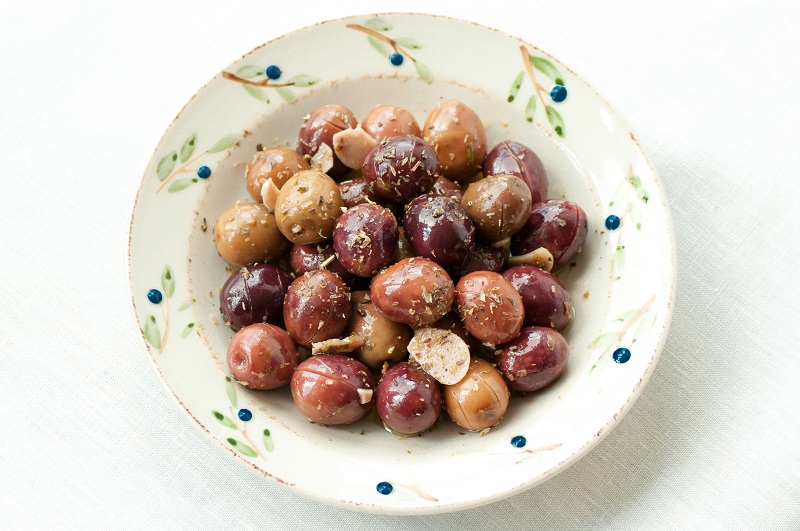
In Portugal, folks enjoy a cup of coffee (from Ethiopia) after every meal, and tea mostly when they’re feeling sick. Still, it was also by the hand of the Portuguese that tea (from China) became a common beverage in Europe. Even though it’d be easy to associate the British love for tea with their presence in India, drinking tea actually became fashionable in Britain after Catarina de Bragança, from the Portuguese nobility, got married to Charles II of England. Even though the East India Company was already selling tea in London, Catarina popularized the very British habit of afternoon tea.
After several centuries of food exchanges all over the world, what were once upon a time new ingredients are now so assimilated that we tend to forget about their origins. Still, while traveling, I reminisce about the influence that my country has had on several cuisines around the world. Tempura, one of the standard cooking techniques in Japan, comes from Portugal, from the habit of battering and deep-frying vegetables like green beans.
In any given Indian restaurant around the world, I come across vindaloo, and I can’t help but think how this strong dish is the Indian adaptation of Portuguese Carne de Vinha D’alhos (meat marinated with wine and garlic), which Goans adapted substituting the wine with vinegar. In Asia, it will be impossible for me to bite into an egg tart, without craving a Pastel de Belém, which is the original Portuguese custard tart.
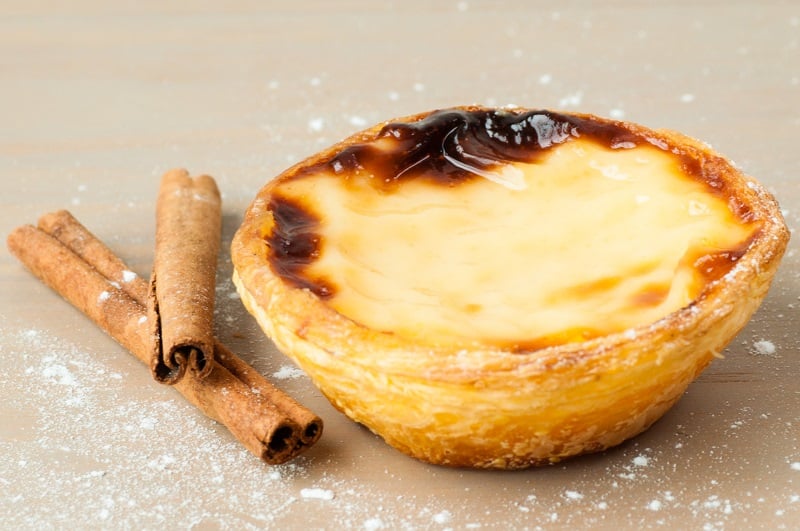
The Taste of Traditional Portuguese Food
Traditional Portuguese dishes result from the geographical position of Portugal, tucked between the Atlantic Ocean and the Mediterranean Sea, with a noticeable influence from the wider word, notable when it comes to the use of spices.
Despite the impact that the Age of Discoveries had on Portuguese food, the main characteristic of most traditional Portuguese recipes is still simplicity. Staples such as olives and olive oil, tomatoes, bread, various meats and plenty of fresh seafood are prepared in ways that highlight the original flavor of the ingredients, without diffusing them.
While the north of Portugal is more meat focused, giving special attention to pork, the south of the country is more seafood oriented. Portugal has the highest per capita consumption of fish in Europe, eaten mostly grilled (sardines, mackerel, sea bass, sea bream, tuna from the Azores Islands, among others) and stewed.
Still, nothing says Portuguese food like Bacalhau, that is, salted cod fish. More than 365 preparations involving salted cod are said to exist, one for each day of the year. While every family virtually has its own cod recipe, the most common across the country are Bacalhau à Brás (shredded cod sautéed with string potatoes, onions and eggs), Bacalhau à Gomes de Sá (cod fish casserole) and Pastéis de Bacalhau (cod fritters).
Back in the day, the heavy use of spices was seen as a sign of wealth. When these seasonings became widespread and affordable, their usage started decreasing. But if there are two spices that the Portuguese still can’t live without, those are piri-piri from Africa, and cinnamon from Asia.
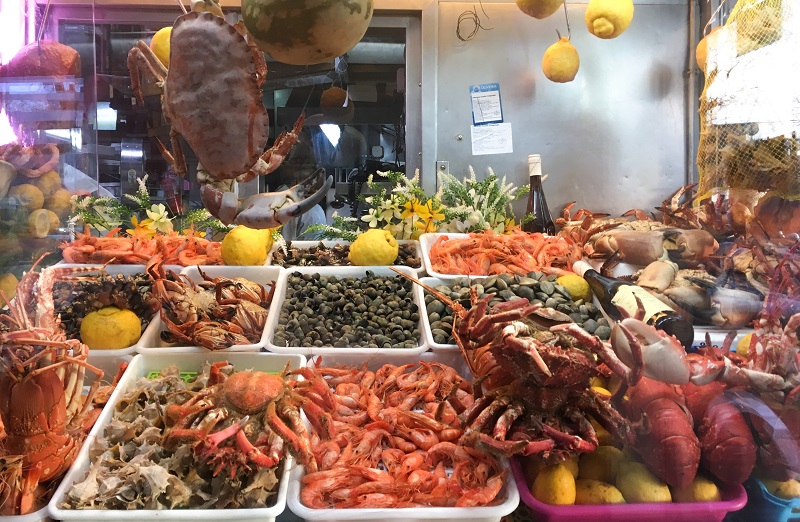
Piri-piri is used to condiment the famous Portuguese charcoal grilled chicken, which has very little to do with Nando’s, the South African chain that popularized this typical Portuguese dish internationally. In Portugal, where people would traditionally eat at home or sitting down at a restaurant during special occasions, Frango no Churrasco (grilled chicken) was for many years one of the few take-out food options. Along with fried potatoes, and an extra splash of peri-peri sauce for those who like is hot, it’s still one of the most beloved foods in the country.
The most important spice still being used from the times of the Spice Route is undoubtedly cinnamon, used to flavor the vast range of Portuguese pastries and desserts. Portuguese sweets tend to be egg-based. About 500 years ago, many of the now typical Portuguese sweets were invented by nuns and monks in convents. Those who had devoted their life to religion, used egg whites to starch their clothes, leaving them with large amounts of egg yolks which they didn’t discard. Instead, they developed recipes in which they could use them, such as Leite Creme (eggs custard), Pudim Flan (eggs pudding) or Pudim Abade de Priscos (bacon pudding). The famous Pastel de Belém (widely known in Asia as Portuguese egg tart), is the most iconic pastry in Portugal and, arguably, the most representative Portuguese food in the international context. Without a generous sprinkle of powdered cinnamon right before biting into it, Pastéis de Belém
wouldn’t be the same!
Digging into Portuguese cuisine is one of the most interesting ways to get to know our country. While I would definitely recommend an extended exploration, I know most travelers’ free time doesn’t match their appetite or desire for discovery. This is why I always recommend whoever visits my country to spend a solid amount of time in Lisbon. Beyond the popular landmarks and picturesque neighborhoods that remind us of a time gone by, the capital city of Portugal is also the best place to start getting acquainted with the most traditional preparations of Portuguese cuisine.
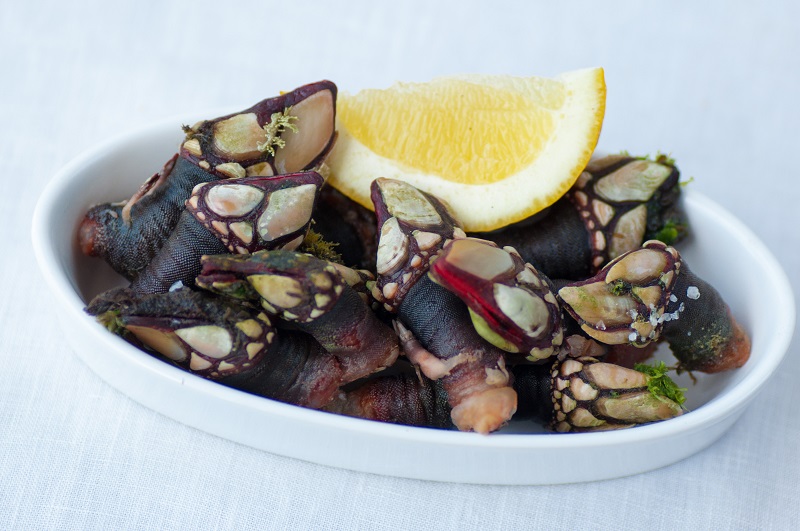
You shouldn’t leave Lisbon without trying a few cod fish recipes. Tasting the extremely fresh flavors of salt rubbed fish or seafood grilled over charcoal, served with potatoes and a splash of the most golden of olive oils, is also a must. Indulge with the different types of wine my country produces, while munching on petiscos that are small servings of Portuguese specialties meant to be shared, featuring items such as regional cheeses and charcuterie, Salada de Polvo (octopus salad), Roasted Chouriço that is set on fire at your table, assorted seafood like garlic prawns, clams in white wine sauce or goose barnacles. Don’t underestimate the meat based preparations, specially the most unique ones like Carne de Porco à Alentejana (pork with clams) or Cozido à Portugesa (Portuguese meats stew). Above all, do what the Portuguese do and end your meals with dessert, followed by an espresso coffee.
In Portugal, we love not only to eat, but also to talk about food. Here, we eat fresh, plenty and often. In Portugal, food helps us enjoy life. I hope you get to enjoy it this way too when you come to visit!
BIO: Zara Quiroga is a Portuguese travel and food writer. She’s the co-founder of travel website Backpack ME (www.bkpk.me), along with her husband from India. She is also the author of Lisbon in 100 Bites – The Ultimate Lisbon Food Guide (www.lisbonfoodguide.com). The book introduces readers to the typical Portuguese dishes they are likely to come across during a trip to Portugal in an unpretentious and fun way. To download the Lisbon in 100 Bites ebook with a 30% discount, use the offer code vietnamlisbon.

